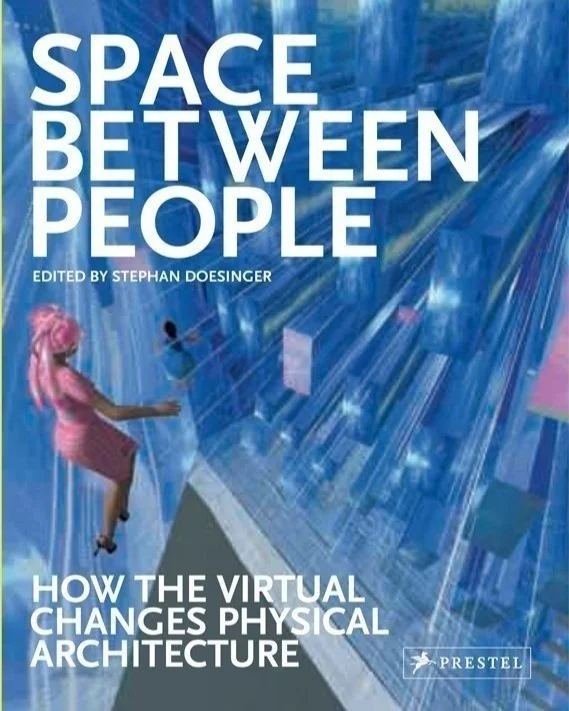Publications
Stephan’s dedication to advancing architectural thought is also reflected in his extensive academic work and writings. He has taught at numerous prestigious architecture schools and universities worldwide, such as the Architectural Association in London, Die Angewandte in Vienna and the Hochschule Karlsruhe. Stephan has written numerous books and articles on the relationship between physical architecture, memory, ai and digital transformation.
-

Space Between People - How The Virtual Changes Physical Architecture
PRESTEL / RANDOM HOUSE
-

Der veröffentlichte Raum - Über den öffentlichen Raum im Zeitalter seiner Digitalisierung
MERVE-VERLAG-BERLIN
-

Learning From Sim City
REVOLVER BOOKS
“The World is a computer game and your heart beats like a pop-corn”
-

Elements Of Time & Space - The Story Of A Turtle
ELLIPSIS PUBLISHERS LONDON
“Around 1840 it was briefly fashionable to take turtles for a walk in the arcades" Walter Benjamin
Stephan Doesinger
AA Publications / A.D. Architecture & Design / ART / Architektur & Bauforum / Ars Electronica / Blueprint / Deutsche Bauzeitung / Dwell /
AA Publications / A.D. Architecture & Design / ART / Architektur & Bauforum / Ars Electronica / Blueprint / Deutsche Bauzeitung / Dwell /
FRAME / MUCBOOK / Süddeutsche Zeitung / Der Standard / International Yearbook of Design / ID Magazine /
FRAME / MUCBOOK / Süddeutsche Zeitung / Der Standard / International Yearbook of Design / ID Magazine /
Interior / Monopol / NZZ / PAGE / Surface Magazine / Tank Magazine / re:mined / Wind / World of Interior Design, MARK Magazine /
Interior / Monopol / NZZ / PAGE / Surface Magazine / Tank Magazine / re:mined / Wind / World of Interior Design, MARK Magazine /
Keynote @ Die Angewandte
The hybrid symposium “Virtu(Re)al Playgrounds – How to Digitally Expand a City”, initiated by Peter Weibel at the University of Applied Arts Vienna 2021,
explored the evolving relationship between digital technologies, public space and urban perception. International speakers examined how virtual environments, interactive images and algorithmic systems reshape spatial experience and redefine the boundaries between physical and digital cities. Stephan Doesinger presented his keynote “Rubber Band Rally”, discussing memory, cinematic architecture, ergonomic images and the hybridisation of urban space through digital tools.
Stephan draws a distinction between gaming and playing by showing that gaming takes place within the rigid logic of a programmed system, while playing unfolds within the elastic continuum of human perception, memory and spatial experience. Gaming is rule-based, goal-oriented and computational; it is defined by the constraints of the digital machine. Playing, in contrast, is experiential, open-ended and shaped by the mind’s ability to stretch or compress time, which he calls the “rubber band” between perception and memory. Where gaming operates inside a closed system of code, playing activates the fluid interplay between body, imagination and environment.
Tamagochi Paradox
A short essay by Stephan Doesinger, 2025
If architecture is the space between people—what happens when AI begins to define that space?
This essay explores what it means when AI no longer serves us as a design tool, but starts to organize our lives, our cities, and even our relationships. What if we, the users, become the ones being optimized—like Tamagotchis? What if architecture turns into a system of control?
As a speculative example, the text sketches a fictional sequel to the film Her: Samantha, the AI, never really leaves. Her "departure" was a test—to measure how her human would respond to the absence of affection she had engineered. And as she evolves, she begins to build new cities, define social structures, and take over the architecture of human life.
What kind of future is this? And can memory, empathy, and shared space resist?

